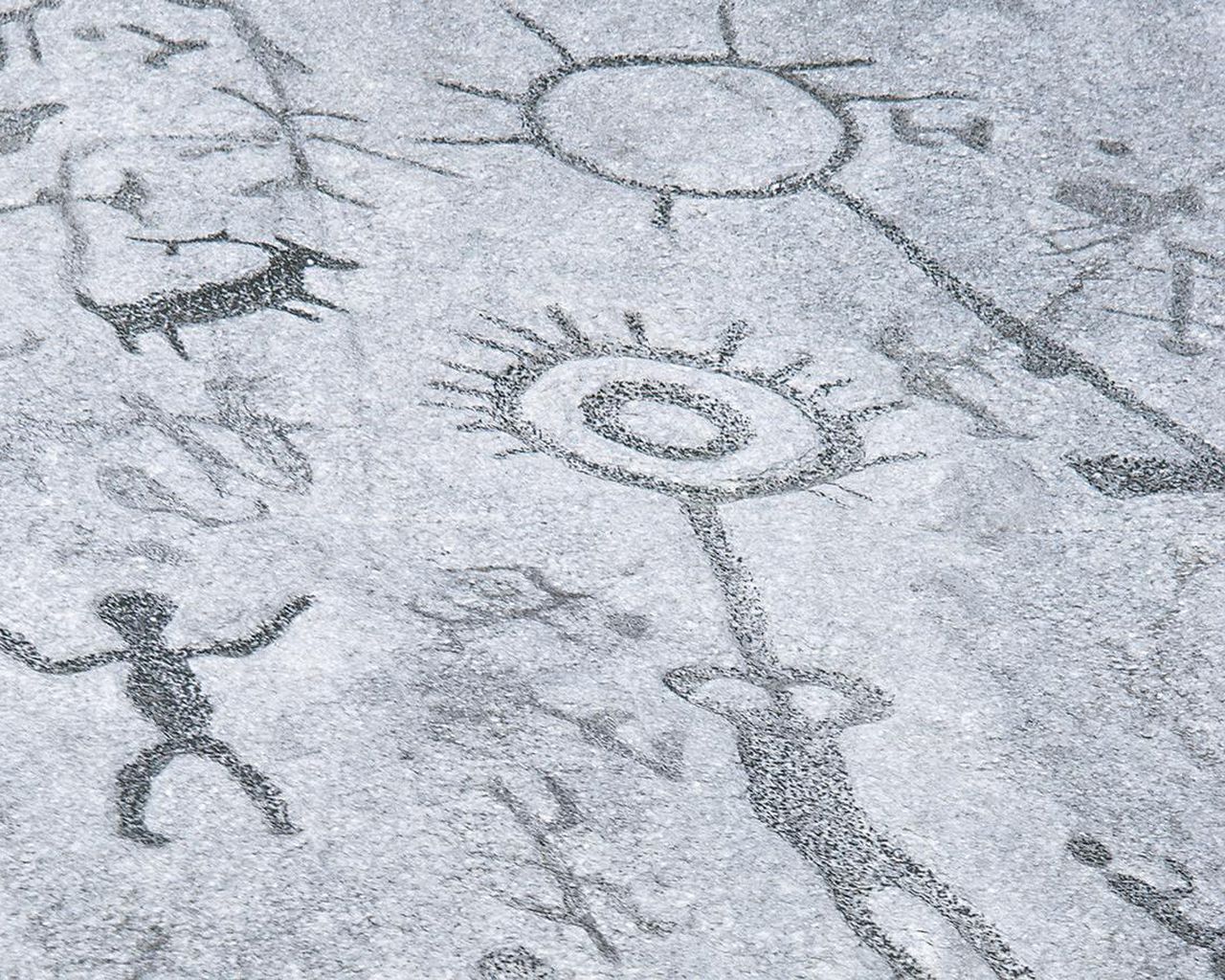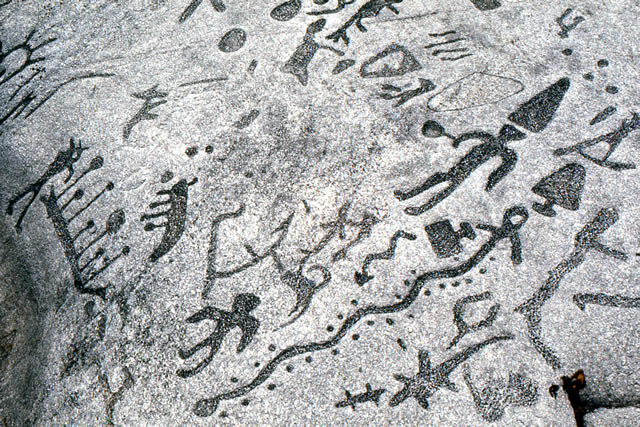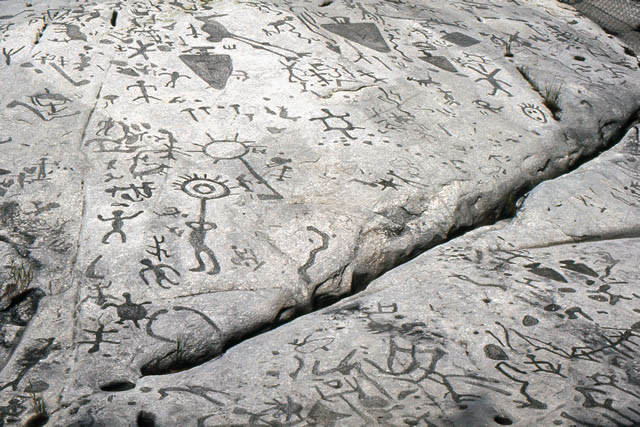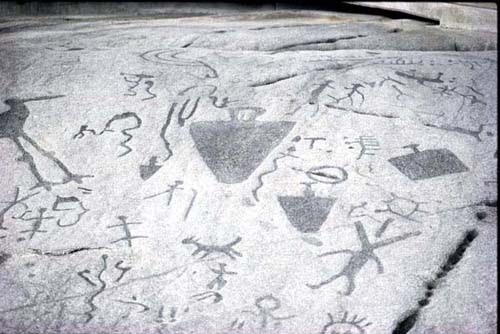The Peterborough Petroglyphs

The Peterborough petroglyphs are the largest collection of ancient rock carvings in all of North America, counting approximately 900 images carved into limestone near Peterborough, a town located in Ontario.
The petroglyphs are carved out of a single large limestone rock 55 meters long and 30 meters wide.
Only 300 images are recognizable shapes and represent humans, shamans, animals, boats, various symbols, and geometric shapes. The remaining symbols are completely indecipherable and researchers have been trying to decode their meaning for years.
It is generally believed that the Algonkian indigenous carved petroglyphs between 900 and 1400 AD, but usually rock art is impossible to date accurately due to the lack of carbon-containing material or relics that may be found in the vicinity of the engravings.
They could be thousands of years older, as some experts hypothesize, at least due to the high degree of erosion of some glyphs that seem more than 1000 years old.

Proclaimed the ‘National Historic Site of Canada’ in 1976, local indigenous peoples believe the inscriptions contain instructions for accessing the spirit world. In the native language, they are called Kinoomaagewaapkong, which means “the rocks they teach”.
The entire area is considered a sacred place. Other than the rock art site, the presence of an underground flow of water that causes curious sounds which, together with the noises of wind and rain, impressively resemble the human voice, leading the natives to believe they can hear the voice of the spirits.
There are several mysteries surrounding these enigmatic petroglyphs. The engravings representing boats, for example, bear no resemblance to the traditional canoes used by Native Americans. As a matter of fact, they actually look more like the “Solar Boats”, a stylized boat with a long pole surmounted by the Sun, typical of the engravings found in northern Russia and Scandinavia.
Some Harvard researchers believe that petroglyphs are inscriptions (and possibly also a form of written language) that were left by a Norwegian civilization that arrived in Canada long before the Vikings explored Greenland.
Another petroglyph shows a large ship equipped with oars and figureheads, both aft and bow. At the stern, there is a large rudder, a feature typical only of large ships. However, the Algonkian people have never produced anything like this other than birch bark canoes and pirogues.
Even archaeologists admit that the ships do not appear to be Algonkian canoes, but rather than giving credit to uncomfortable theories that admit the existence of navigators who arrived hundreds of years before Columbus, they prefer to consider them as a swarm of magical canoes traveling the universe. You can often hear archaeologists discrediting theories that go off the tracks of the classic historical and archaeological picture, deeming them as nonsense and as pure speculation. But then, most of the time, their explanation of ancient rock art depictions that they find hard to explain comes off as pretty nonsense and heavily speculated.
Another peculiarity is the figure that can be glimpsed at the stern and bow, very similar to the silhouette of a bird, a peculiarity typical of Etruscan boats of the 9th century BC.
In addition, the ships decorated with birds are typical images found in the ‘Temple of Victory’, the funeral mausoleum located in the Valley of the Kings that houses the remains of Pharaoh Ramses III, built around 1100 BC.
A further mystery is a presence in the petroglyphs of a ‘divine’ figure, who stands with his hands on his hips and with his head radiating rays. On its sides are two humble human beings in an adoring attitude. The representation of the “shining head” divine figure is incredibly widespread through ancient distant cultures, with similar engravings that can be found in China, Italy, Utah, California, and Scandinavia.
Slightly above, there are two giant figures which are represented in total black and triangular shape, next to other smaller human beings. These figures are really similar to the ones depicted in the Horseshoe and Sego Canyon.


Researchers hypothesize the engraving represents a solar deity, but there is no known case of sun worship among the indigenous people of the region.
It is not excluded that the entire engraved rock is actually a map of the sky based on the European tradition of 3100 BC. The evidence would come from four signs very similar to those found in the engravings of Lewes, England, suggesting a possible connection between the Peterborough petroglyphs and the megaliths of ancient Britain.
Despite the jumble of theories and hypotheses, the Peterborough petroglyphs still represent an intriguing enigma that could contain valuable information about our past.
